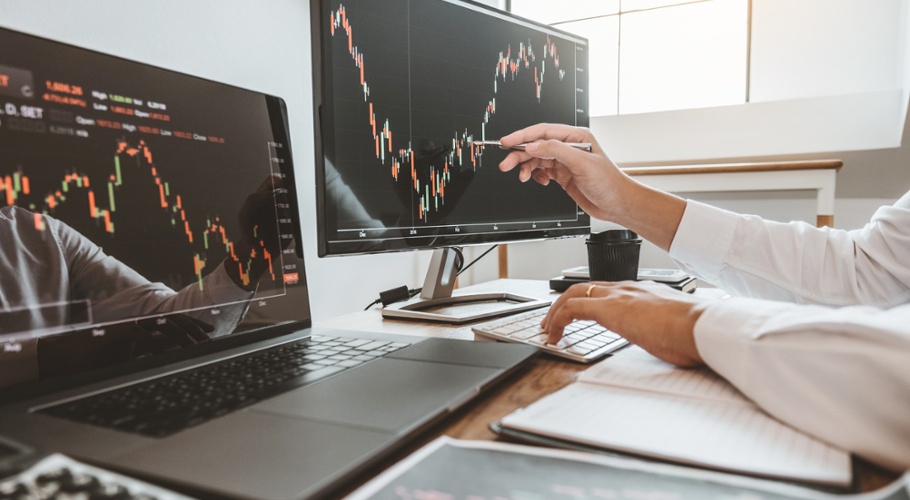Why offshore-listed ETFs can broaden investment horizons
The global exchange traded fund (ETF) market has come a long way since its early days as a provider of passive vehicles that track the world’s biggest indices. It now offers access to almost every asset class and investment strategy imaginable, with offshore exchanges listing many more ETFs than available in Australia.
There are over 3,100 ETFs available in the US, which is nearly 10 times more than the ASX and Cboe Australia combined. The London Stock Exchange – the biggest European centre for ETFs – offers at least another 1,700 products.
The array of investment strategies include those which feature frequently in news headlines, including products run by celebrity investor Cathie Wood’s ARK Invest, to vehicles that are lesser known in the Australian market.
This wider range of ETFs may provide additional opportunities to diversify portfolios, although a number are also available via vehicles listed on the ASX or Cboe Australia.
“If there is demand, the strategy will be covered [in the Australian market] unless there is a regulatory impediment, so it pays to check the local exchange first. A local listing will ensure you avoid the additional administrative hassles that come with investing on overseas exchanges,” says Russel Chesler, Head of Investments and Capital Markets at VanEck in Australia.
“That said, some specific opportunities not available locally include junior gold mining companies, ETFs targeting a broader range of digital assets like Solana, and country-specific ETFs which provide a targeted exposure to the equities of less popular markets for Australian investors such as Indonesia, Vietnam or Brazil,” he says.
“Similarly, there are a broader range of ESG-focused ETFs on European exchanges, where strong investor demand has been driven by comprehensive ESG regulations.”
Global X (US), another ETF provider, pointed AUSIEX to three additional areas in which ETFs have experienced much bigger growth in the US than Australia. The first, they observed, is actively managed ETFs – 297 of such products have been launched in the US this year. As a whole, active ETFs have gained nearly US$168 billion in net inflows so far in 2024 (Morningstar Direct, data as of 31/8/2024).
Secondly, they say, thematic ETFs are a bigger part of the US market. For example, products such as the US-listed Global X Data Center & Digital Infrastructure ETF (DTCR) seek to capitalise on the growth in data centres as a result of the uptake in artificial intelligence.
Finally, they say, US-listed derivative income ETFs can help diversify exposures within an equity income portfolio for investors who understand these markets. For example, the Global X Russell 2000 Covered Call ETF (RYLD) writes covered calls on the Russell 2000 small cap index.
Buyer beware
When opting for an offshore-listed ETF, the extra factors to consider include foreign regulation and tax implications.
“If you invest on any international exchange, your investment will be governed primarily by foreign law. This means you may have to contend with legislation that doesn’t exist in Australia. Consumer protections or the ability for recourse, may not be available to foreign investors,” says VanEck.
Advisers may also not have access to the same depth of third-party research they do for locally-listed ETFs, so may need to rely on their own analysis of a product. This is particularly important as not all ETFs, particularly those with niche investment strategies, may meet the criteria that advisers consider essential before recommending products to clients.
“It is crucial for investors to assess the asset manager running an ETF before investing. Consider the manager’s depth of experience not only in terms of investment management, but also their specific experience with respect to the assets within the ETF, as well as their expertise building and managing ETFs,” says Chesler.
Global X (US) says: “just as clients trust their advisers to manage their assets, advisers must trust ETF issuers to deliver promised exposures and provide transparency. Advisers can use resources like SEC press releases to identify whether issuers have been the subject of charges or complaints.”
Execution tips
Direct international trading also comes with other considerations, which apply as much to ETFs as ordinary shares. These include the exchange fees that can apply in individual markets, as well as the time difference between Australia and elsewhere.
Conditional orders or trading triggers may be particularly useful for offshore ETFs because market makers keep ETFs in line with underlying stocks when they’re bought and sold in real time – which is generally outside Australian working hours. Setting automated trades if a price moves significantly may help to avoid situations in which investors wake up to an unexpected loss.
Offshore markets are unlikely to offer ETFs hedged to the Australian dollar – so currency risk is an additional consideration for advisers and their clients. Those who wish to actively manage this risk could consider using multi-currency wallets offered by brokers that allow investors to hold cash in chosen denominations over time.
The wallets can be used to both buy shares and hold sale proceeds, so currency doesn’t need to be exchanged for every transaction.
Dividends can also accumulate in a wallet, allowing advisers to choose exactly when to convert the foreign currency back into Australian dollars (note: investors who buy ETFs listed on international exchanges are unable to reinvest their dividends).
There is much to consider for advisers looking to add offshore ETFs to portfolios – but it may be a worthwhile diversification strategy for some clients.
Read more about dual access funds and how to choose the best option.

